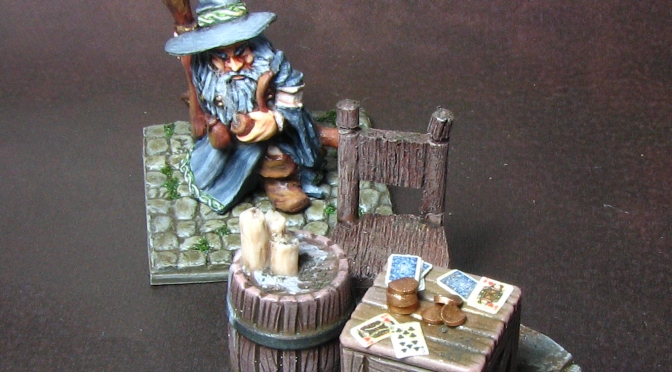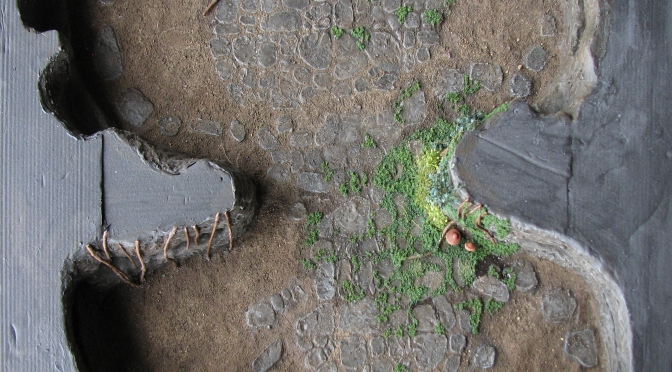We already took a look at my set of 2.5 dimensional dungeon tiles for some hearty Dungeon & Dragons sessions or some simple SoBaH past-time. I also recently completed a set of Hirst Arts castings to furnish the dank rooms of my dimly lit dungeon.
However, the tiles were not entirely finished and some of the features were still missing, such as door and wall elements, tiles with a wooden floor and a bigger room that is suitable for boss encounters. These also elevate the dungeon to the third dimension.
This post is mostly picture centred with some short comments about the techniques used. For a more comprehensive how-to have a look at the older post.
Continue reading Rome wasn’t built in a day – 3-D Dungeon tiles










